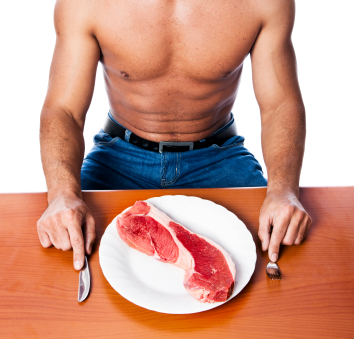 Now that you have a good idea of how to teach your indoor cycling class about the basics of carbohydrates and performance, let”™s move into the next logical macronutrient: protein.
Now that you have a good idea of how to teach your indoor cycling class about the basics of carbohydrates and performance, let”™s move into the next logical macronutrient: protein.
You”™d be surprised at the number of people in your class who have only a very basic understand of protein, and often simply think that it is derived from meat and should be eaten with dinner.
Begin your discussion of protein with an explanation of what proteins actually are: vital components of every organ and action within the human body, without which we would simply cease to function. In the absence of proper nutritional building blocks for protein, the human body will cannibalize it”™s own lean muscle mass and organs, and experience a weakened immune system, poor performance, and inadequate recovery and fitness response. Proteins are comprised of amino acids — many of which the body cannot make on it”™s own unless complete proteins are present in the diet.
But it”™s a myth that you need to get your complete protein from meat.
While healthy cold-water fish, free range chicken, lean beef, bison and buffalo, and even pork area all complete amino acid sources, it”™s often not practical to eat these immediately after a workout, especially during the magical “20 minute post-exercise window” during which protein consumption is vital.
Instead, think using about protein sources such as whey, rice, hemp or soy protein powder, all of which can be mixed in fruit, coconut water, regular water, almond milk, rice milk or soy milk and consumed as a post exercise treat. Real whole grain foods such as quinoa, amaranth and millet are very easy to prepare and offer an impressive protein profile. Combined proteins, specifically from grains like whole wheat bread with nuts from something like almond butter, can also offer protein in the absence of meat.
When consumed closer than 2 hours prior to exercise, proteins will draw water and blood into the stomach, and damage exercise performance. Due to increased time of gastric emptying and digestion, any complete proteins should instead be eaten at least 2 hours prior or immediately after a spinning session. Proteins should only be consumed during a workout if an exercise session will last more than 2 hours, after which the body can begin to rely on protein as a fuel.
Finally, most individuals will be just fine with 0.8 grams of protein per pound, but very active individuals or athletes may need as much as 1.2 grams of protein per pound. There are 4 calories in one gram of protein.
Now your class has an idea of what types of proteins they can eat, when they should eat those proteins, and how much protein to consume!
I”™m following Ben”™s Triathlon Rock Star Triathlete Academy as I train for my first Triathlon. John
- Tri-Lingo 101 — Part 1: Common Triathlon Swim Terms - September 4, 2019
- Tri-Lingo 101 — Part 5: Common Triathlon Race Terms - March 16, 2011
- Tri-Lingo 101 — Part 2: Common Triathlon Bike Terms - February 13, 2011

Oh, thank you for jumping on the protein train! I literally transformed my body by increasing proteins to 110 grams/day. Several years ago a young guy approached me after class and literally said, “As hard as you work out, you should look a lot better…you must live on carbs.” He challenged me to increase my protein for 3 weeks. I agreed, and the results were absolutely amazing as I immediately saw lean muscle but more importantly, I felt powerful and energetic. I now give away a protein shake after class – anything to convince students they must consume more than 20 grams a day – typical for most women!! Thank you for reaffirming!!
Tofu and soy are complete proteins as well. Students can also easily carry some nuts with them (and nuts are all the rage too). It’s really not difficult to get protein. In fact, the American diet typically provides plenty of protein. Excess protein is bad for your kidneys and is excreted in urine. This article really should include a discussion of healthy protein intake.
Where can I find Part: 1. Thanks, Julie Zweck-Bronner
Barbara,
I am currently in cycle classes. I am 165 and 5’2″ female. Although my arms and legs are muscular I hold a lot of weight in my stomach region. I have heard the protein story, but PLEASE tell me your trick to lean muscle. Protein, cycling, and what else? Thank you!